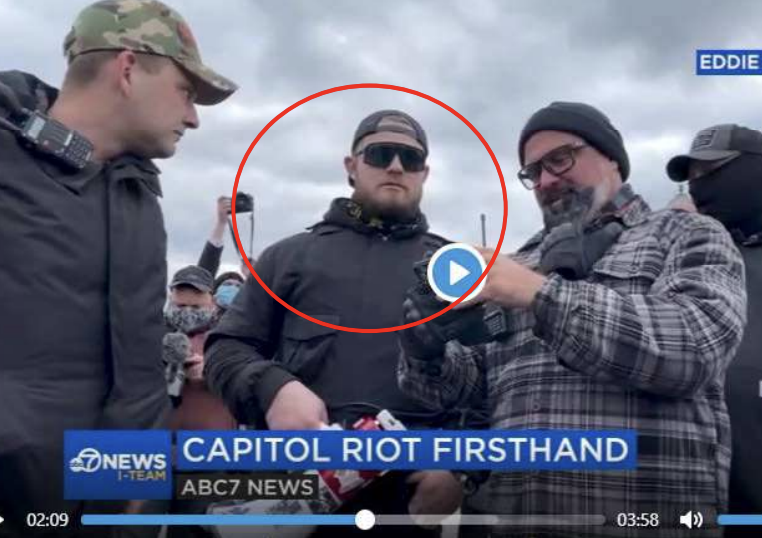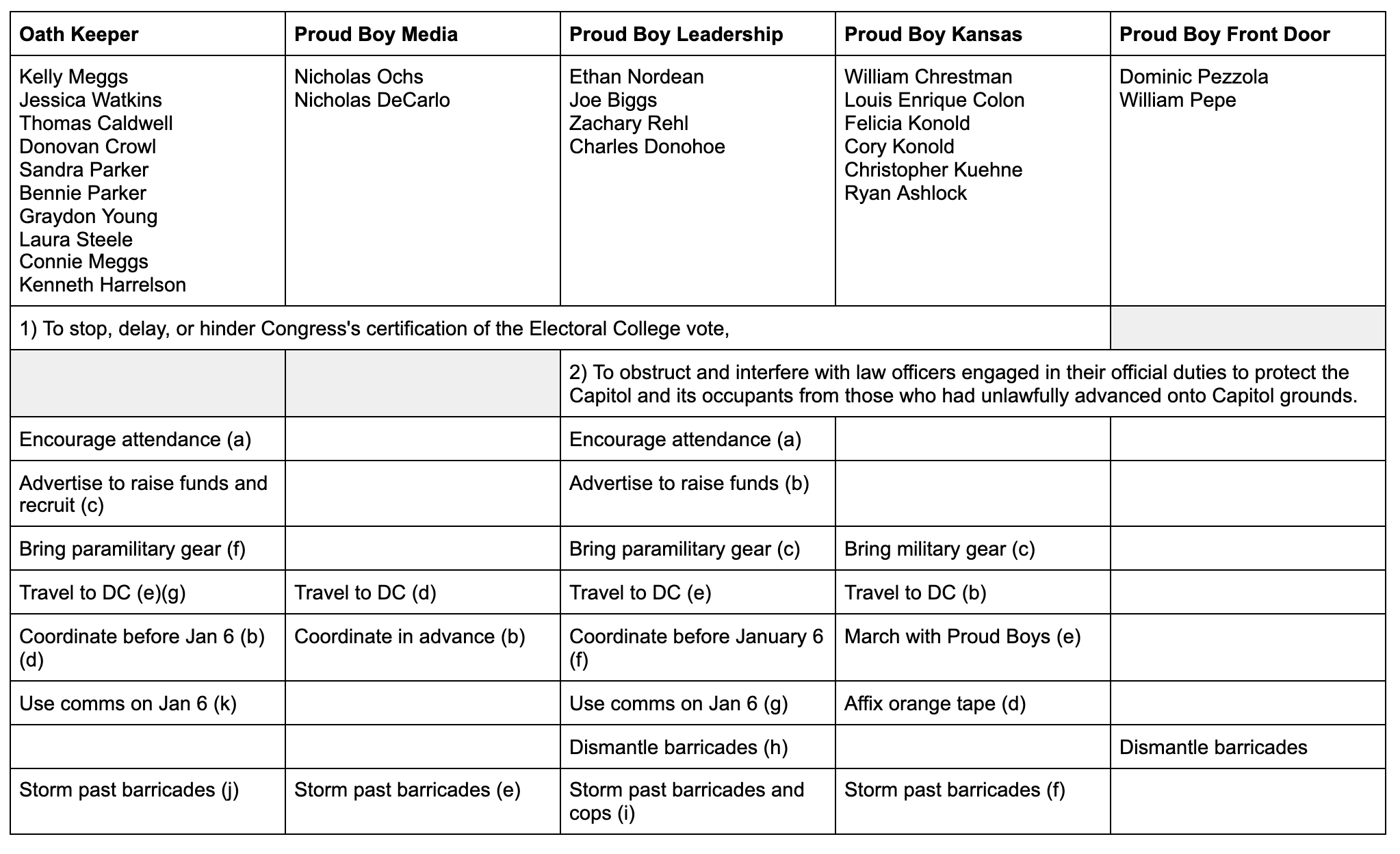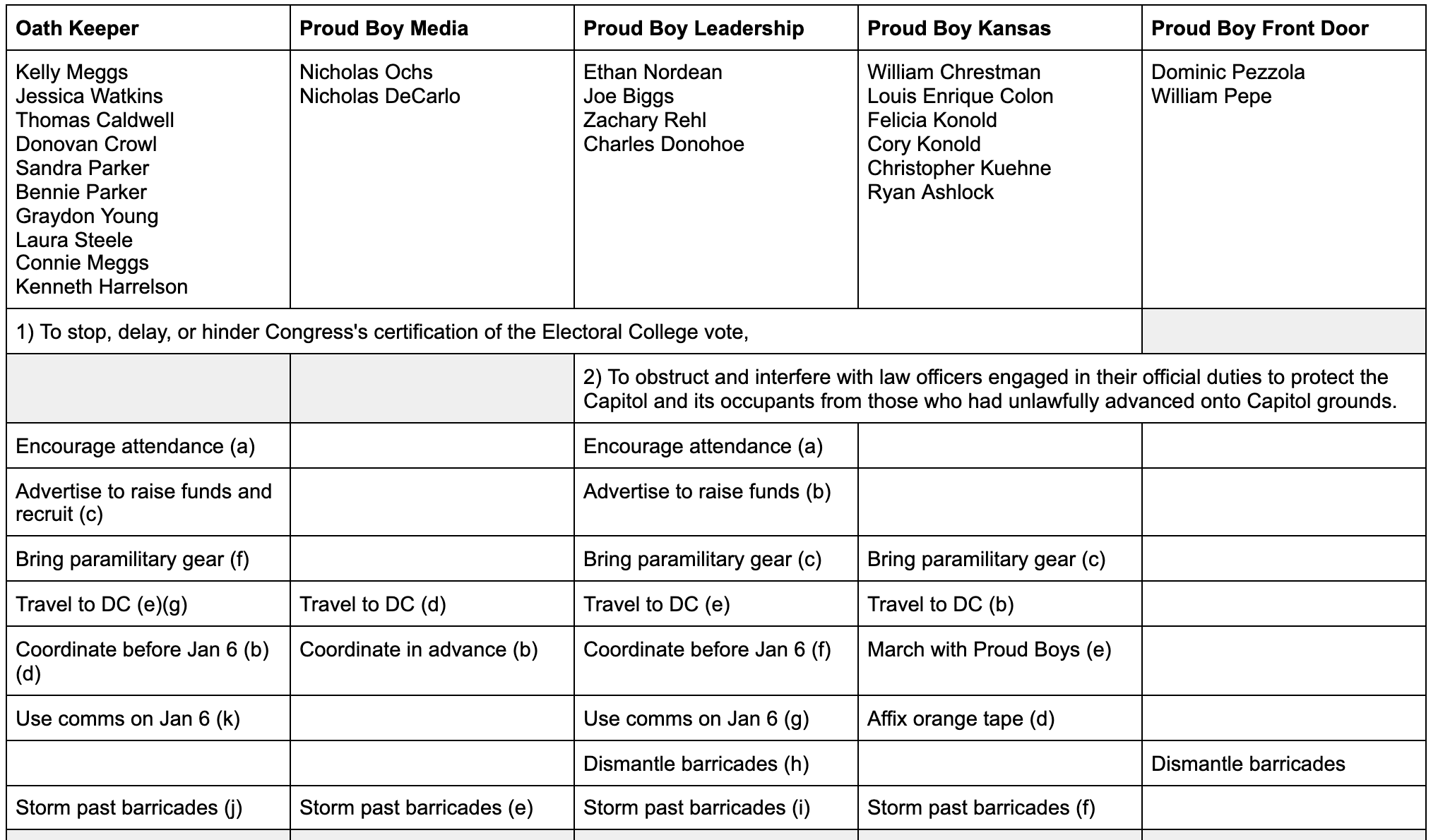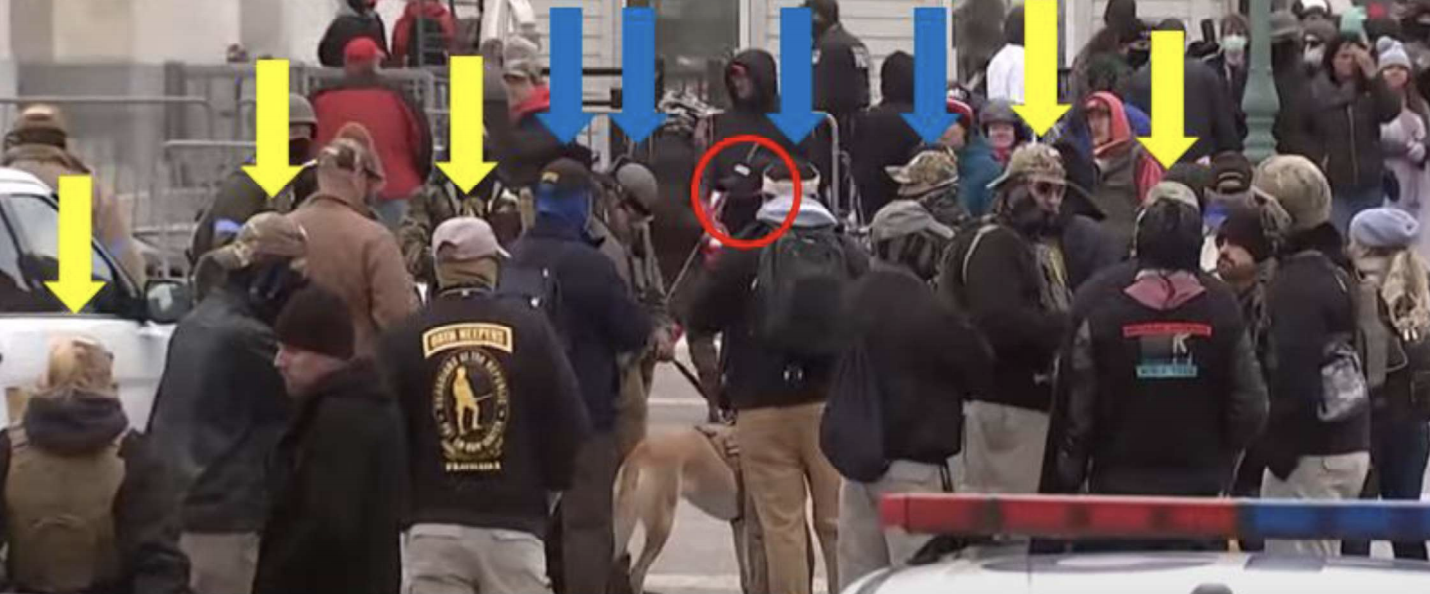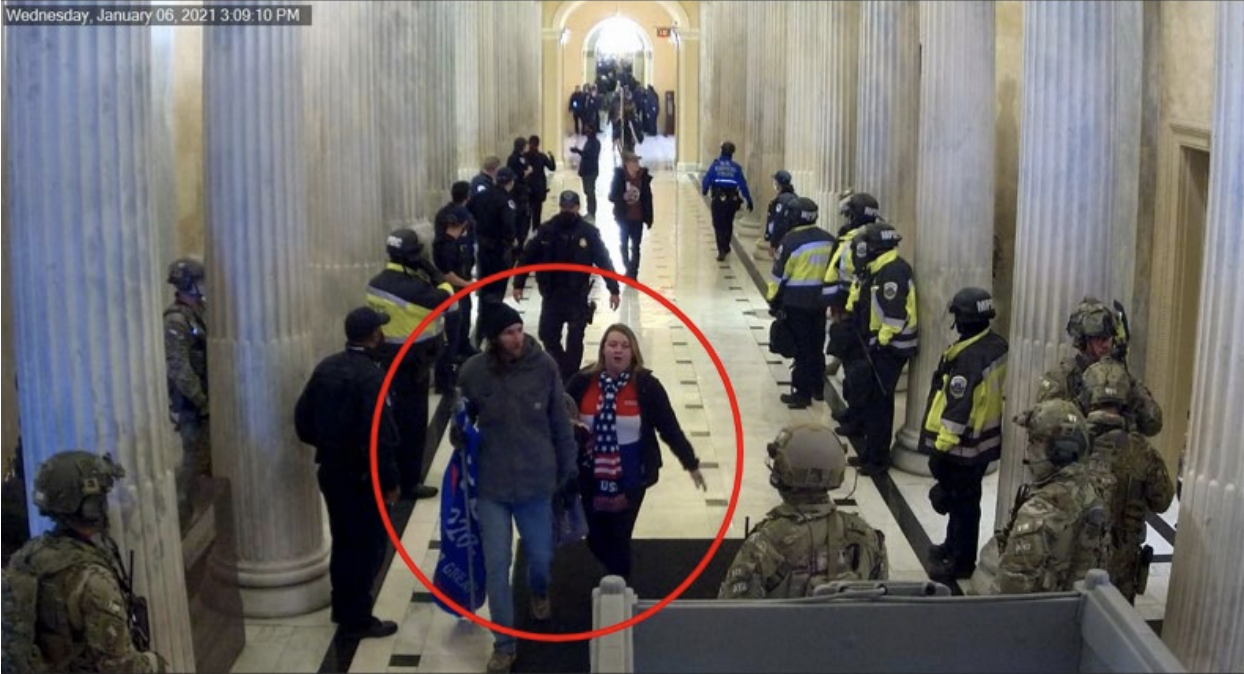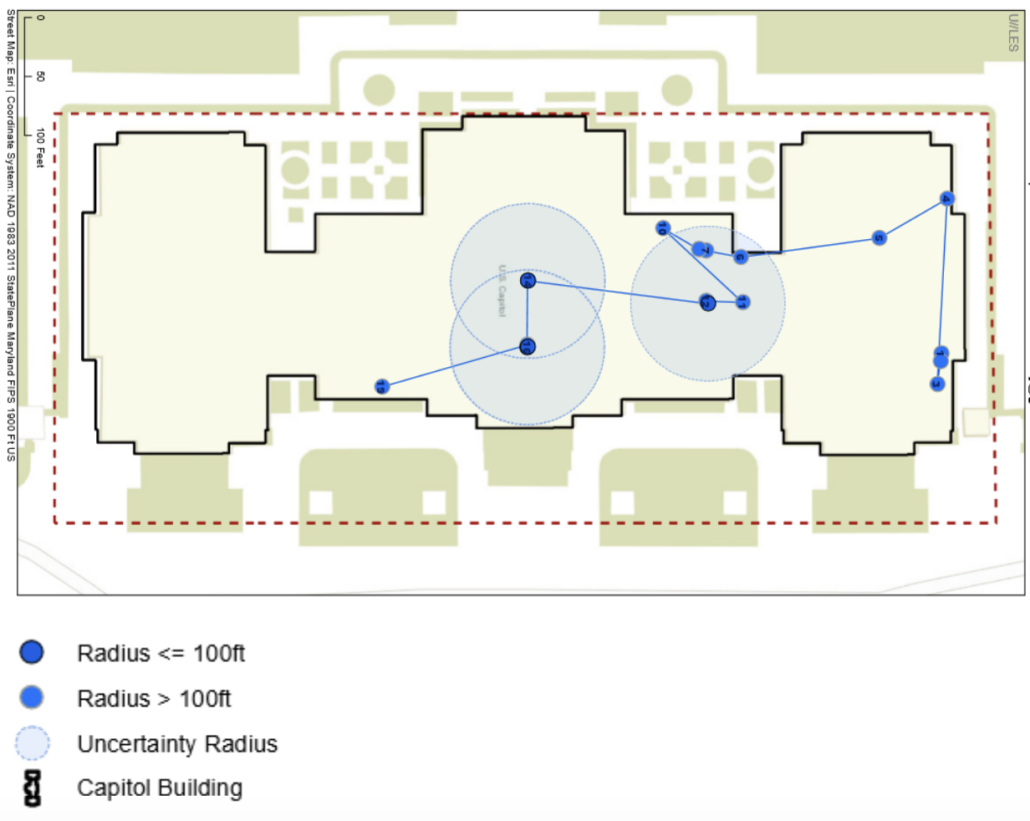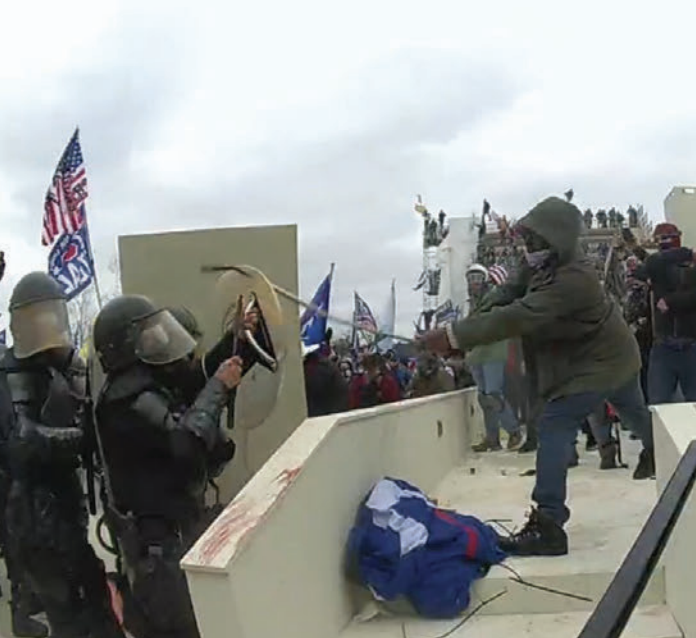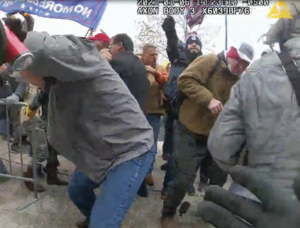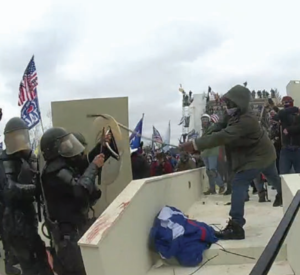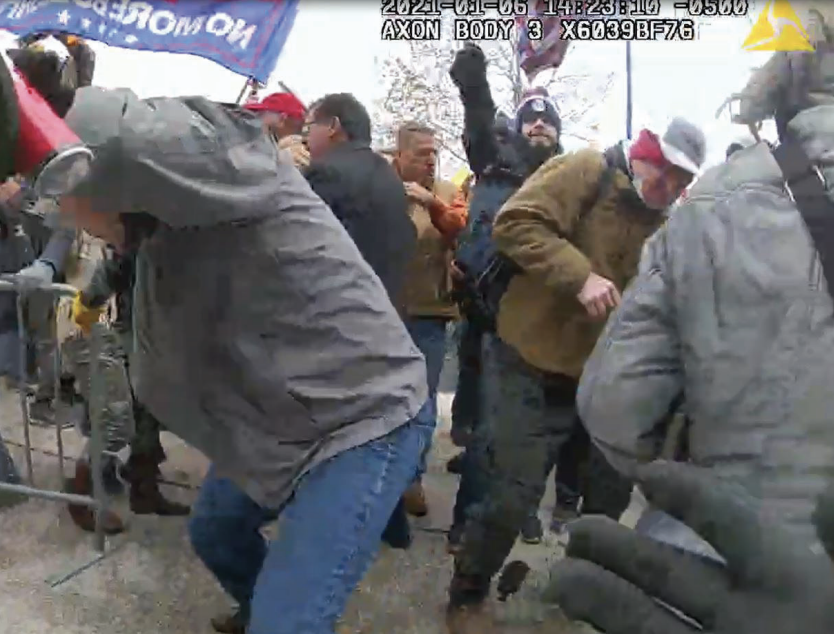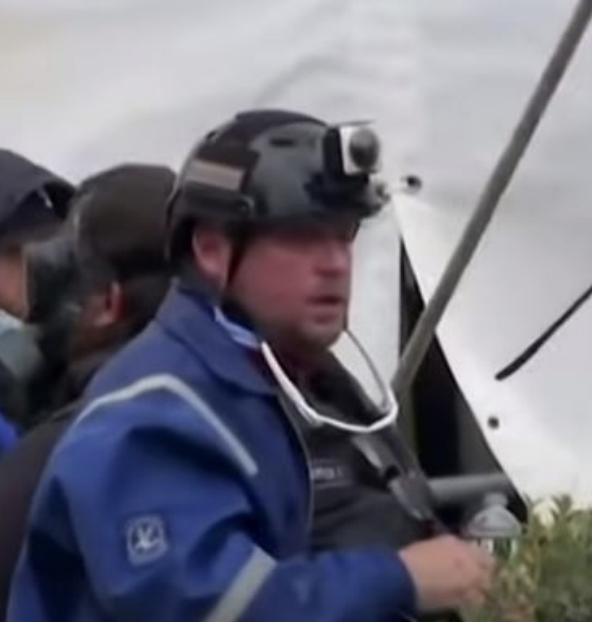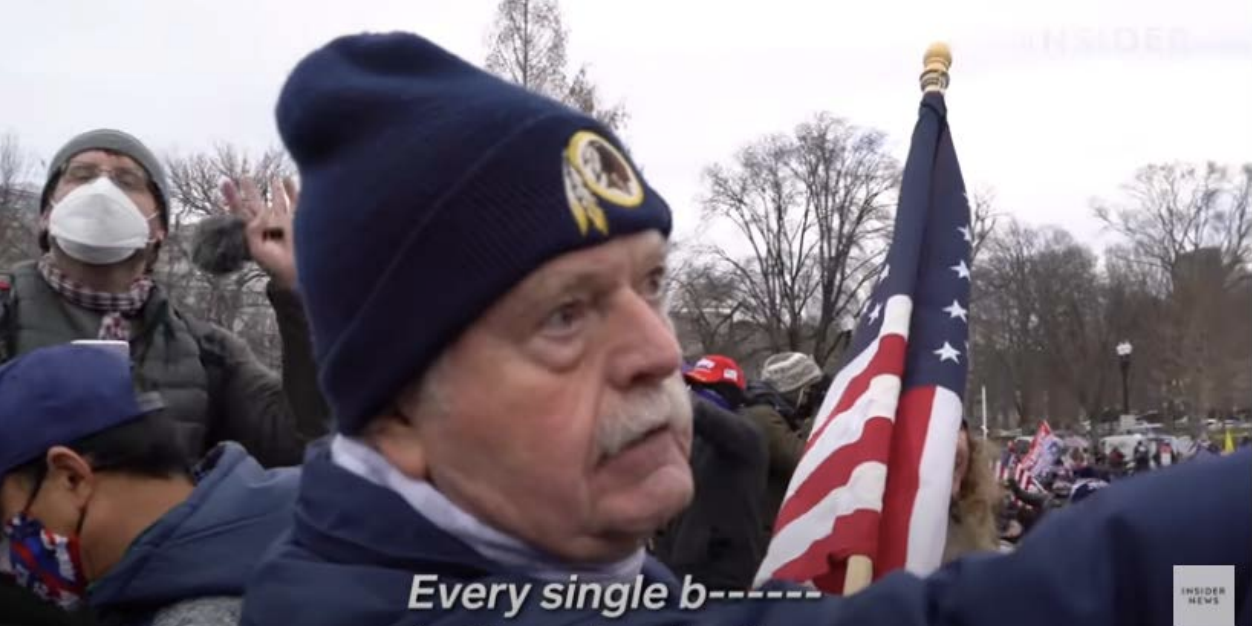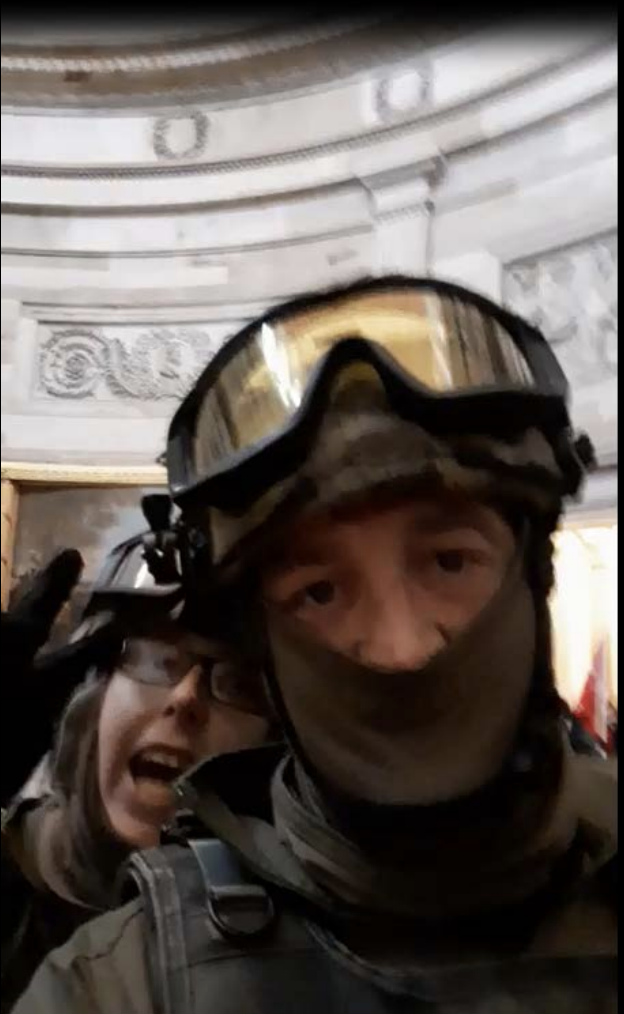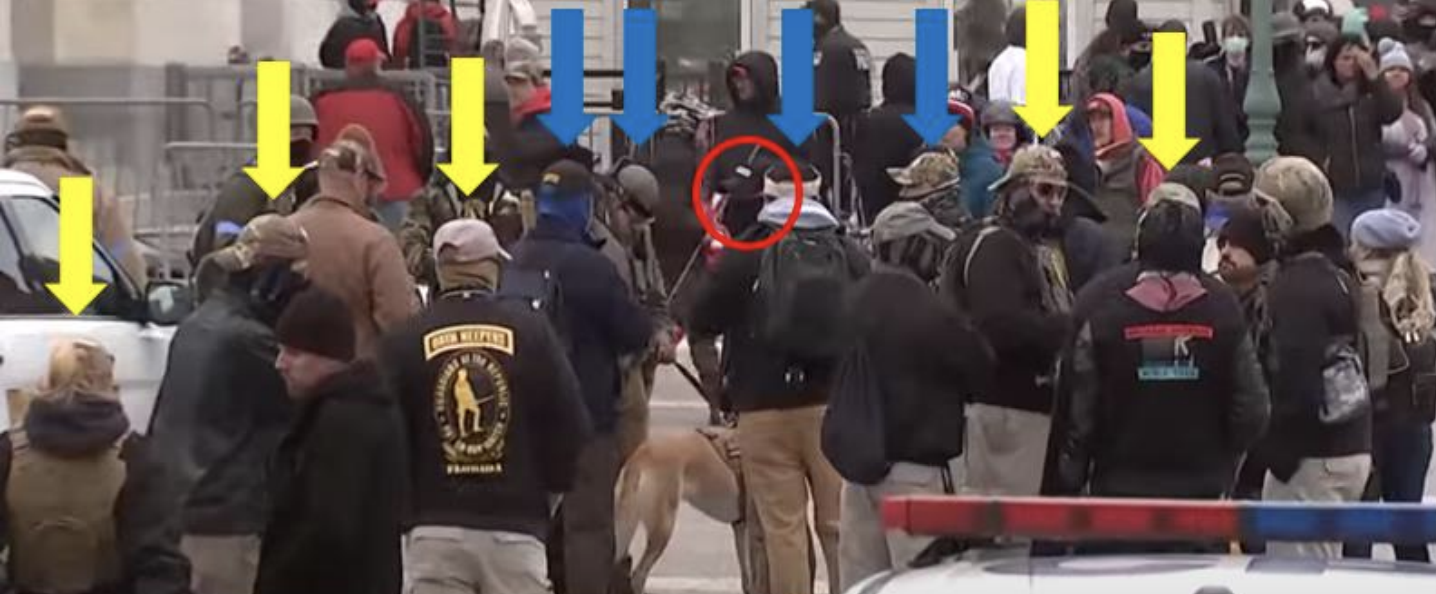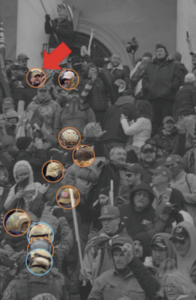The Three Key Details the Proud Boy Unindicted Co-Conspirator Likely Revealed to Prosecutors
By March 1, the government had three pieces of evidence that form a key part of a conspiracy indictment accusing Ethan Nordean, Joe Biggs, Zachary Rehl, and Charles Donohoe of conspiring to breach the Capitol and by doing so, delaying the certification of the vote:
- The Proud Boys used Baofeng radios set to a specific channel (which channel prosecutors knew)
- After Enrique Tarrio’s arrest, Ethan Nordean got put in charge of the January 6 operation
- The gang had a plan to split up to optimize the chances of success
A detention motion for Nordean submitted on that day included all three of these details. It described how the Proud Boys distributed Baofeng radios to use in the operation.
Arrangements were made to program and distribute multiple Baofeng radios5 for use by Proud Boys members to communicate during the event. Baofeng is a Chinese communications equipment manufacturer. Baofeng radios can be programmed to communicate on more than 1,000 different frequencies, making them far more difficult to monitor or overhear than common “walkie talkie” type radios. Specific radio frequencies were communicated to the Proud Boys.
5 Law enforcement recovered a Baofeng radio from Defendant’s home during the execution of a search warrant—the Baofeng radio recovered from Defendant’s home was still tuned to frequency that had been communicated to the group.
[snip]
The group led by Defendant arrived at the east side of the Capitol before noon. Several of the men in the group were holding Baofeng radios. Others had them clipped to their belts or jackets.
It described how Nordean was put in charge after Tarrio’s arrest.
Moreover, following the arrest of the Proud Boys’ Chairman on January 4, 2021, Defendant was nominated from within to have “war powers” and to take ultimate leadership of the Proud Boys’ activities on January 6, 2021.
[snip]
On January 4, 2021, Henry “Enrique” Tarrio, the self-proclaimed “Chairman” of the Proud Boys was arrested shortly after arriving in Washington, D.C., pursuant to a warrant issued by D.C. Superior Court. In communications between Proud Boys members following Tarrio’s arrest, it was acknowledged that Defendant would be among those that led the Proud Boys on the ground on January 6, 2021.
And it described a decision to split people up in an effort to increase the likelihood of actually shutting down the certification of the vote.
As noted more fully below, Defendant—dressed all in black, wearing a tactical vest—led the Proud Boys through the use of encrypted communications and military-style equipment, and he led them with the specific plans to: split up into groups, attempt to break into the Capitol building from as many different points as possible, and prevent the Joint Session of Congress from Certifying the Electoral College results.
[snip]
In order to increase the odds that their plan would succeed, Defendant and those Proud Boys following him dressed “incognito” and spread out to many different locations from which they could force entry into the Capitol. Defendant and others responsible for the January 6 Proud Boys event likely knew from experience that their typical tactic of marching in “uniform,” and in unison, would draw a concentrated law enforcement response to their location. By blending in and spreading out, Defendant and those following him on January 6 made it more likely that either a Proud Boy—or a suitably-inspired “normie”—would be able to storm the Capitol and its ground in such a way that would interrupt the Certification of the Electoral College vote
Even after prosecutors shared these damning claims, their bid to keep Nordean in jail failed. Nordean’s wife filed a declaration stating in part that Nordean obtained the radio on January 7 and, to her knowledge, he did not possess such a radio before that date.
An indictment against Nordean obtained on March 3 to comply with the Speedy Trial Act (but not released publicly until after the detention hearing) mentioned none of that.
And at the March 3 detention hearing before Beryl Howell, according to Zoe Tillman, the government withdrew the claim that Nordean had the Proud Boys split into groups as a factor for that detention hearing. In what the WaPo described as, “a remarkable stumble for prosecutors,”Judge Howell released Nordean to home detention, saying there was little evidence that Nordean played that leadership role.
Nordean “was a leader of a march to the Capitol. But once he got there it is not clear what leadership role this individual took at all for the people who went inside,” Howell said. “Evidence that he directed other defendants to break into or enter the Capitol is weak, to say the least.”
Nordean’s release marked a stumble for prosecutors, who have cast him as a key figure based on what Howell agreed were “ominous” communications before Jan. 6 that they said indicated he and other Proud Boys were planning “violent action” to overwhelm police and force entry to the Capitol. The judge’s decision sets back for now the government’s efforts to establish that there was a wider plot to that end.
[snip]
“The government has backed down from saying that he directly told them to split into groups and that they had this strategic plan,” Howell remarked.
Howell said that although Nordean’s release was a “close call,” she agreed with the defense that “there’s no allegation that the defendant caused injury to any person, or that he even personally caused damage to any particular property.”
Prosecutors claimed they had this evidence on March 1. But after failing to present it at that March 3 hearing, Nordean got released.
On March 15, the judge assigned to the case after Nordean got indicted, Timothy Kelly, issued an order delaying the arraignment scheduled for the next day. He offered no explanation.
What didn’t become clear until this week is that, on March 10, the government obtained the superseding indictment against Nordean and others. And then, on March 12, the government asked Judge Kelly to delay Nordean’s arraignment on his original indictment because of the superseding indictment. Prosecutors explained that revealing the indictment ahead of time would risk alerting Rehl and Donohoe before they could be arrested and their houses searched.
On March 10, 2021, a federal grand jury sitting in the District of Columbia returned a Superseding Indictment charging Defendant, and three co-defendants (two of whom were not previously charged), with Conspiracy, in violation of 18 U.S.C. § 371; Obstruction of an Agency Proceeding, in violation of 18 U.S.C. §§ 1512(c)(2), and 2; Obstructing Law Enforcement During a Civil Disorder, in violation of 18 U.S.C. §§ 231(a)(3), and 2; 18 U.S.C. §§ 1361, and 2; Entering and Remaining in a Restricted Building or Grounds, in violation of 18 U.S.C. § 1752(a)(1); and Disorderly and Disruptive Conduct in a Restricted Building or Grounds, in violation of 18 U.S.C. § 1752(a)(2).
The Superseding Indictment is under seal, pending the arrest of newly charged defendants and the execution of search warrants. Law Enforcement anticipates executing the arrests and search warrants of the new defendants in a coordinated operation on Wednesday, March 17, 2021. Once the arrests are executed, the Superseding Indictment will be unsealed.
The evidence the superseding indictment provides to substantiate claims first made on March 1 may explain an even bigger reason why prosecutors didn’t provide their evidence for those three claims in time to keep Nordean in custody: They had an unindicted co-conspirator (presumably someone cooperating with prosecutors) who was, along with the four conspiracy defendants, on an encrypted channel created after Enrique Tarrio’s arrest on January 4 that Proud Boy leaders used to continue planning for January 6. That unindicted co-conspirator was personally involved in all three details included in that detention memo against Nordean. He helped divvy up the Proud Boys to be spread out during the January 6 operation.
39. On after Chairman’s January 4, 2021, shortly after Proud Boys Chairman’s arrest pursuant to a warrant issued by D.C. Superior Court, DONOHOE expressed concern that encrypted communications that involved Proud Boys Chairman would be compromised when law enforcement examined Proud Boys Chairmans’ phone. DONOHOE then created a new channel on the encrypted messaging application, entitled, “New MOSD,” and took steps to destroy or “nuke” the earlier channel. After its creation, the “New MOSD” channel included NORDEAN, BIGGS, REHL, DONOHOE, and a handful of additional members.
40. On January 2021, at 7:15 p.m., DONOHOE posted a message on various encrypted messaging channels, including New MOSD, which read, “Hey have been instructed and listen to me real good! There is no planning of any sorts. I need to be put into whatever new thing is created. Everything is compromised and we can be looking at Gang charges.” DONOHOE then wrote, “Stop everything immediately” and then “This comes from the top.”
41. On January 4, 2021, at 8:20 p.m., an unindicted co-conspirator (“UCC-1”) posted to New MOSD channel: “We had originally planned on breaking the guys into teams. Let’s start divying them up and getting baofeng channels picked out.”
Note: If “New MOSD” was a channel of State leaders of the Proud Boys, it would likely have included Nicholas Ochs, who heads the Hawaii chapter of the Proud Boys. Ochs was the first senior Proud Boy to be arrested, on January 7, at the airport when he arrived back in Hawaii (and therefore carrying anything he had with him at the insurrection, potentially including his cell phone and any radios he kept). Kathryn Rakoczy, who has since moved onto the team prosecuting the Oath Keepers, was the original prosecutor on Ochs’ case. But now Christopher Berridge, who is on all the other Proud Boy cases but not the Nordean and Biggs one, is prosecuting Ochs. Ochs is charged in a parallel conspiracy indictment, with the very same goal and many of the same means as the Nordean and Biggs one, but which for some reason was not identified as a related case to the other three Proud Boy ones and so was not assigned to Judge Kelly; Judge Howell is presiding over Ochs’ case. Ochs has a superb defense attorney, Edward McMahon. Many of these details, which make the curious treatment of the Ochs-DeCarlo conspiracy indictment clear, are in this post or this expanded table.
Whoever the unindicted co-conspirator is, he’s the one who set the channel of the Baofeng radios the night before the insurrection. And he’s the one who stated that Nordean was in charge.
46. At 9:03 p.m., REHL notified NORDEAN, BIGGS, DONOHOE and others that he had arrived in Washington, D.C. DONOHOE responded by requesting one of the radios that REHL had brought.
47. At 9:09 p.m., UCC-1 broadcast a message to MOSD and Boots on the Ground channels that read: “Stand by for the shared baofeng channel and shared zello channel, no Colors, be decentralized and use good judgement until further orders” UCC-1 also wrote, Rufio is in charge, cops are the primary threat, don’t get caught by them or BLM, don’t get drunk until off the street.” UCC-1 then provided a specific radio frequency of 477.985.
It is highly likely that prosecutors learned the three details included in that detention motion — that Nordean had been put in charge, that the Proud Boys were using Baofeng radios set to frequency 477.985, and that part of the plan was to disperse the men to increase chances of success — from the unindicted co-conspirator and or devices seized from him when he was first arrested.
And it took them less than two months to learn those details of the plot.
Update: The government has moved to detain both Nordean and Biggs now. Those motions cite from the Telegram chats the Proud Boys used to organize the day before the attack, including (I’ve combined them from both motions):
On January 5, between 9:30 – 9:32am [Biggs] stated “What are the teams. I keep hearing team [sic] are picked already.” A few minutes later, [Biggs] stated “Who are we going to be with. I have guys with me in other chats saying teams are being put together.”
On January 5, at 9:32am, a member of a Proud Boys Telegram group stated “It seems like our plan has totally broken down and rufio has taken control as a singke [sic] point of contact.”
On January 5, between 5:22 – 5:25pm, [Biggs] stated “Woth [sic] [coconspirator Ethan Nordean] trying to get numbers so we can make a plan.” Defendant then stated “Just trying to get our numbers. So we can plan accordingly for tonight and go over tomorrow’s plan.”
On January 5, at 5:52pm, [Biggs] stated “We are trying to avoid getting into any shit tonight. Tomorrow’s the day” and “I’m here with [co-conspirator Nordean] and a good group[.]”
On January 5, at 9:07pm, co-conspirator Charles Donohoe asked “Hey who’s boots on ground with a plan RN [ … ] Guys are asking.” A participant in the encrypted chat stated “Supposed to be Rufio.”
Within minutes, an unindicted co-conspirator broadcast a message to those in the group chat, “Rufio is in charge, cops are the primary threat, don’t get caught by them or BLM, don’t get drunk until off the street.”
On January 5, between 9:17 and 9:20pm, [Biggs] stated “We just had a meeting woth [sic] a lot of guys. Info should be coming out” and then “I was able to rally everyone here together who came where I said” and then, “We have a plan. I’m with [co-conspirator Nordean].”
On January 5, at 9:34pm [Biggs] told co-conspirator Charles Donohoe to communicate to Proud Boys members a message stating that the group in Washington, D.C. would meet at the Washington Monument at 10am on January 6.
On the morning of January 6, Donohoe stated that he was on his way to the Washington Monument, and “I have the keys until Rufio and [co-conspirator Zachary Rehl] show up.”
Update: As I note in a footnote to this post, Nicholas Ochs can’t be the unindicted co-conspirator. That’s true for two reasons. First, because DOJ does not believe UCC-1 was at the Capitol on January 6 (though doesn’t say where he was). DOJ knows Ochs was inside the Capitol. Also, DOJ has now started treating all the Proud Boy conspiracies as the same conspiracy. So Ochs could not, then, be considered un-indicted in that conspiracy.

